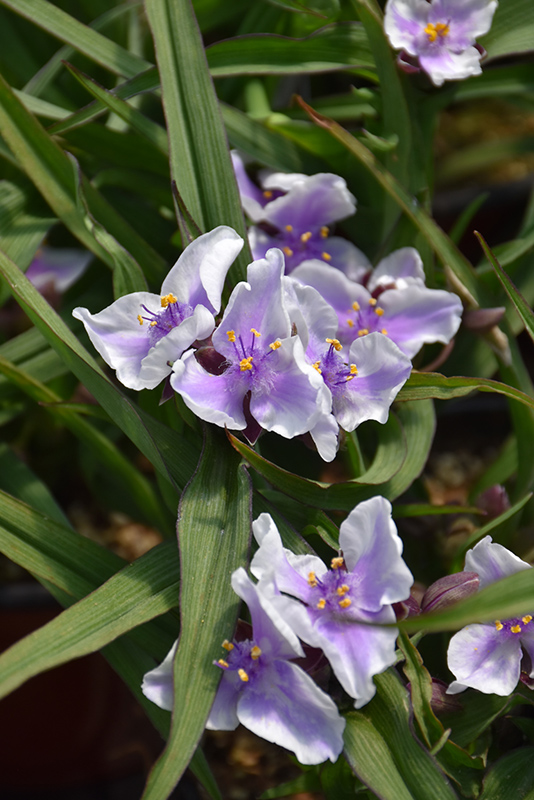Brunswick
422 Bath Road
Brunswick, ME 04011
1-800-339-8111
207-442-8111
Falmouth
89 Foreside Road
Falmouth, ME 04105
1-800-244-3860
207-781-3860
Cumberland
201 Gray Rd (Route 100)
Cumberland, ME 04021
1-800-348-8498
207-829-5619
Bilberry Ice Spiderwort
Tradescantia x andersoniana 'Bilberry Ice'
Height: 15 inches
Spacing: 14 inches
Sunlight:
![]()
![]()
![]()
Hardiness Zone: 3a
Other Names: Widow's Tears
Ornamental Features
Bilberry Ice Spiderwort has masses of beautiful clusters of white flowers with lavender overtones at the ends of the stems from early to late summer, which emerge from distinctive purple flower buds, and which are most effective when planted in groupings. Its grassy leaves remain green in color throughout the season.
Landscape Attributes
Bilberry Ice Spiderwort is an herbaceous perennial with an upright spreading habit of growth. Its relatively fine texture sets it apart from other garden plants with less refined foliage.
This is a relatively low maintenance plant, and is best cleaned up in early spring before it resumes active growth for the season. It is a good choice for attracting butterflies to your yard, but is not particularly attractive to deer who tend to leave it alone in favor of tastier treats. It has no significant negative characteristics.
Bilberry Ice Spiderwort is recommended for the following landscape applications;
- Mass Planting
- Border Edging
- General Garden Use
- Naturalizing And Woodland Gardens
Planting & Growing
Bilberry Ice Spiderwort will grow to be about 15 inches tall at maturity, with a spread of 18 inches. When grown in masses or used as a bedding plant, individual plants should be spaced approximately 14 inches apart. It grows at a fast rate, and under ideal conditions can be expected to live for approximately 10 years. As an herbaceous perennial, this plant will usually die back to the crown each winter, and will regrow from the base each spring. Be careful not to disturb the crown in late winter when it may not be readily seen! As this plant tends to go dormant in summer, it is best interplanted with late-season bloomers to hide the dying foliage.
This plant performs well in both full sun and full shade. It requires an evenly moist well-drained soil for optimal growth. It is not particular as to soil type or pH. It is highly tolerant of urban pollution and will even thrive in inner city environments. Consider applying a thick mulch around the root zone in winter to protect it in exposed locations or colder microclimates. This particular variety is an interspecific hybrid. It can be propagated by division; however, as a cultivated variety, be aware that it may be subject to certain restrictions or prohibitions on propagation.

